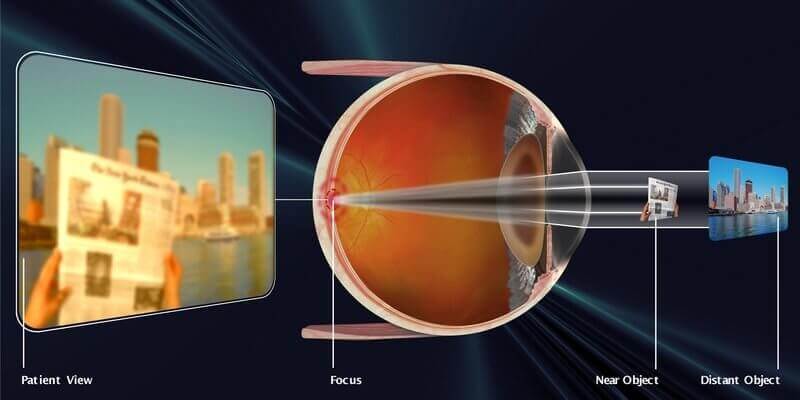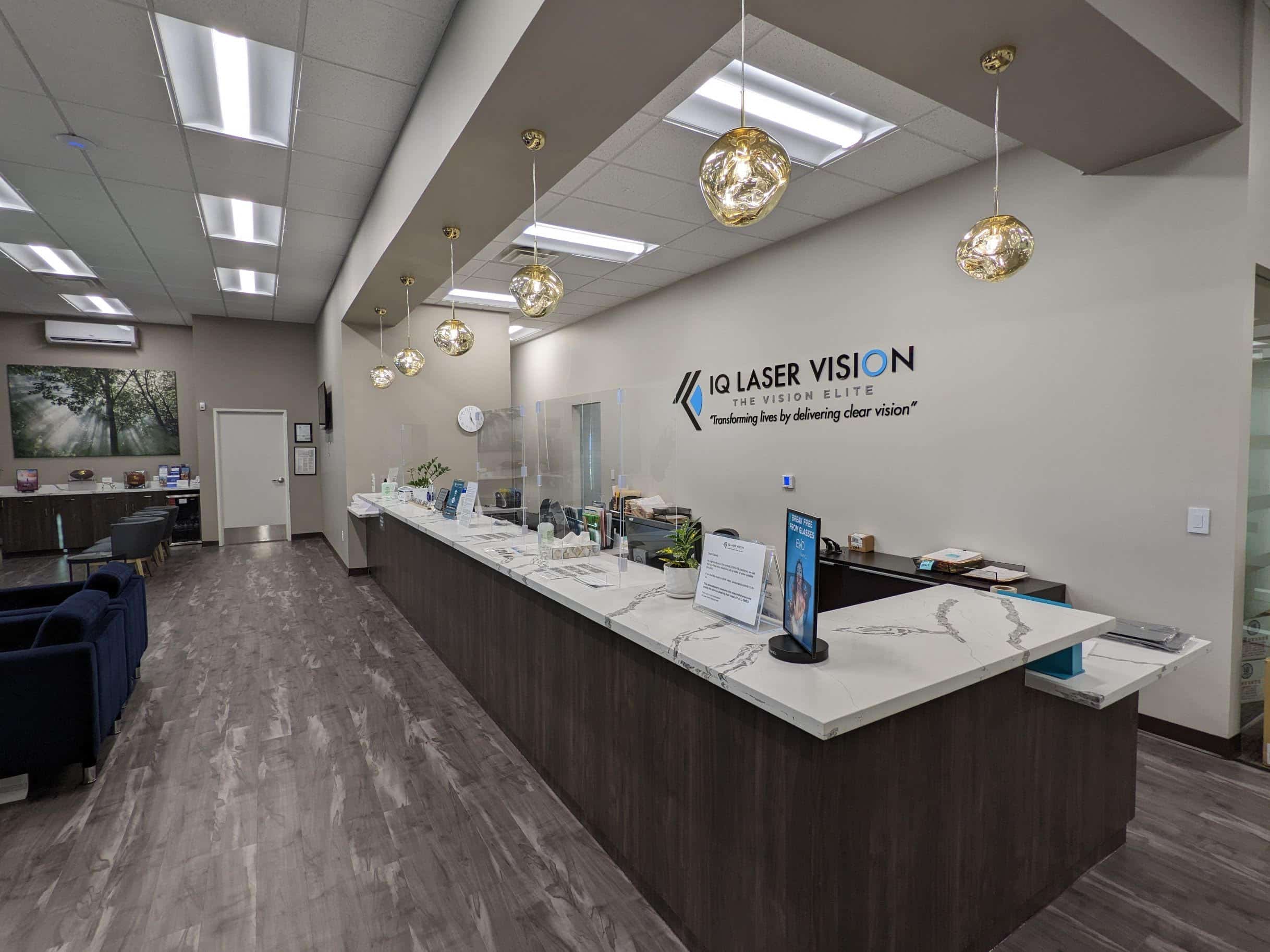Familiar Vision Problems
Over half the population in the United States experiences one or more common visual acuity problems. Generally, people with visual acuity problems are nearsighted, farsighted, and/or have astigmatism. Collectively, these conditions are medically referred to as lower order aberrations. Lower order aberrations are usually corrected by wearing glasses, contact lenses or by laser vision correction.
Understanding Your Prescription

If you’ve seen the vision prescription your optometrist or ophthalmologist prepares following an eye exam, you’ve probably seen a series of positive or negative numbers, one for each eye. These values are known as diopters, and they typically measure the refractive power of your eyes on a scale of -14 to +14.
A person with 20/20 vision will most likely have a reading of zero diopters. A person with myopia (nearsightedness) would have a negative diopter value; a person diagnosed with hyperopia (farsightedness) would have a positive diopter value.
Regardless of whether the number is negative or positive, a higher number indicates a higher refractive error. Your prescription specifies just how much vision correction is required to correct your particular vision problems.
To understand these refractive errors, compare the information and illustrations below of an eye with good visual acuity with a myopic (nearsighted), hyperopic (farsighted) or astigmatic eye.
Good visual acuity
What you’ve probably always heard is true: the human eye does work like a camera. The light and images we see pass through the cornea at the front of the eye. The light and images then go through the lens inside the eye, and, finally, focus directly onto the retina, at the back of the eye. The retina sends the “signals” to our brain, which registers them.
Poor visual acuity is primarily caused by refractive errors. These errors occur when the cornea is shaped in such a way that the images we see do not focus directly on the retina.
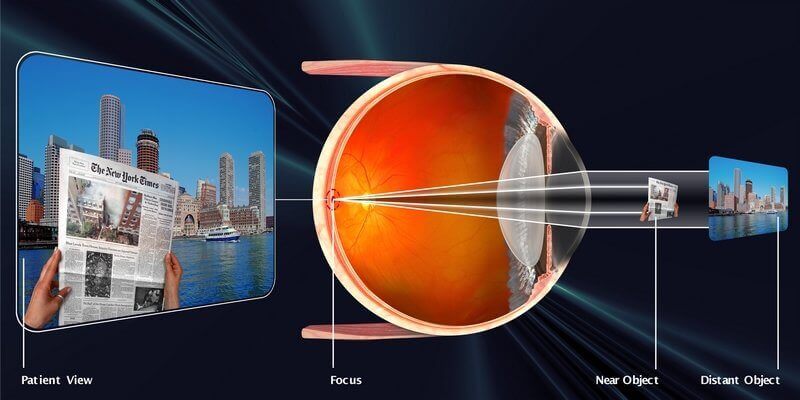
Myopia (Nearsightedness)
When you’re nearsighted or myopic, images in the distance will seem blurry. It is difficult to see far. Your eyes may be longer than normal or the cornea may be too curved, so images focus in front of the retina.
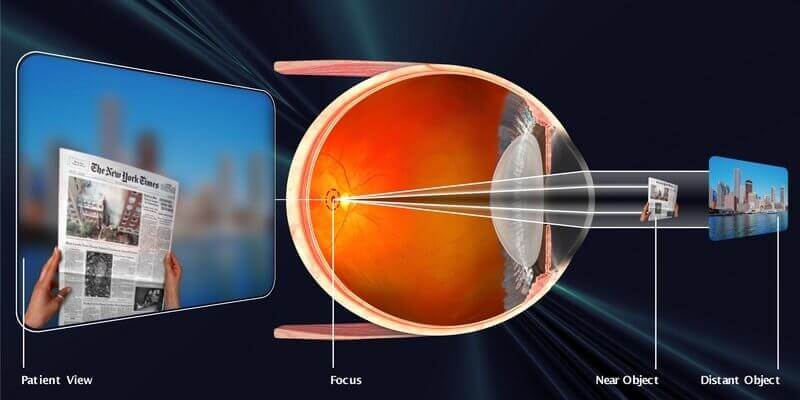
Hyperopia (Farsightedness)
When you are farsighted or hyperopic, images that are near (the words on a page, for example) appear to be more blurry than images in the distance. It is difficult to see near. Your eyes may be too short, or your cornea too flat, so images focus behind the retina.
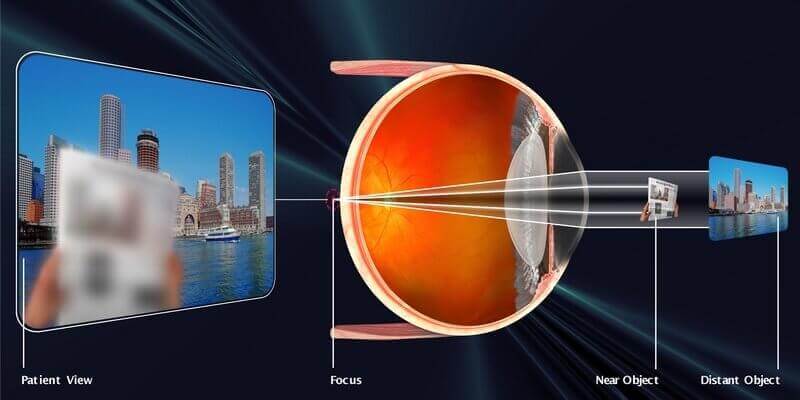
Astigmatism
Astigmatism results in a blurring of all images, whether near or far. Here, images focus on more than one point in front of, or behind the retina. The result is that all images, whether near or far, may be blurry. In mixed astigmatism, symptoms of myopia or hyperopia are combined, resulting in the overall inability to see images clearly.
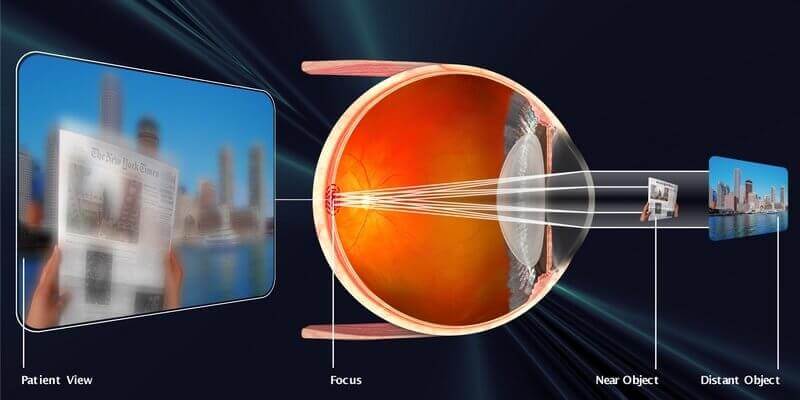
Presbyopia
Presbyopia, another common vision problem, is different from any of the problems discussed above. A physiological weakening of vision due to the natural aging process, presbyopia is the reason many people require reading glasses from the time they reach middle age. Since presbyopia reflects a problem with the eye’s lens, and not its cornea, it cannot be directly corrected by LASIK.
However, using a concept called “blended vision”, LASIK can provide many patients with satisfactory distance and near vision without glasses.
Another excellent way of treating presbyopia and reducing dependence on reading glasses is with a procedure called refractive lens exchange (RLE). Refractive lens exchange removes your natural lens and replaces it with a forever young lens. The forever young lens is an artificial lens that helps you see clearly. The bonus of the forever young lens is that you also won’t develop cataracts, ensuring you’ll see clearly for many years after the procedure.
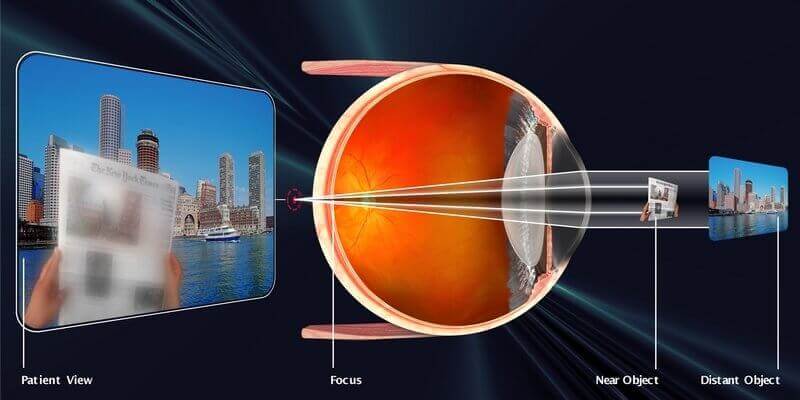
Cataract
Cataract is a clouding that develops in the lens of the eye. It typically develops slowly and over time obstructs the passage of light into the eye, potentially causing blindness if left untreated. Cataracts is common among older individuals and is the most common cause of vision loss in people over age 40. Common symptoms include: Cloudy/blurry vision, colors seem faded, double vision, difficulty seeing at night.
